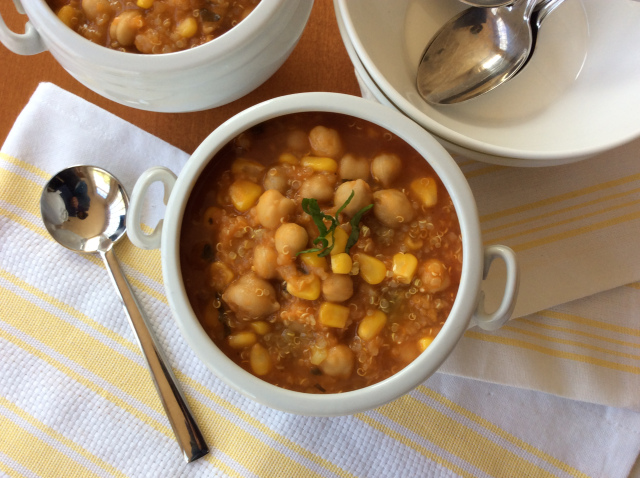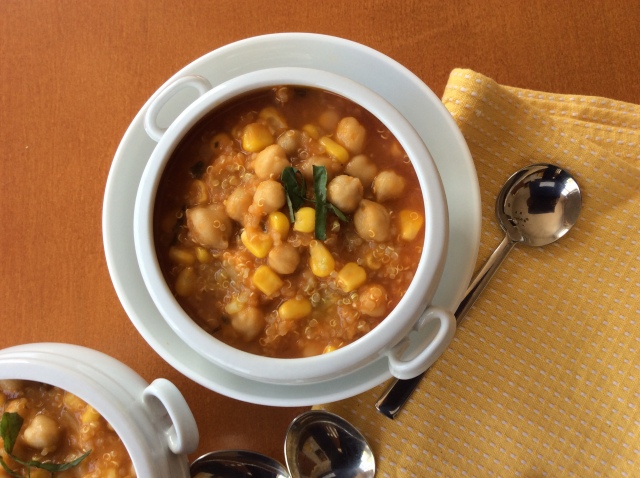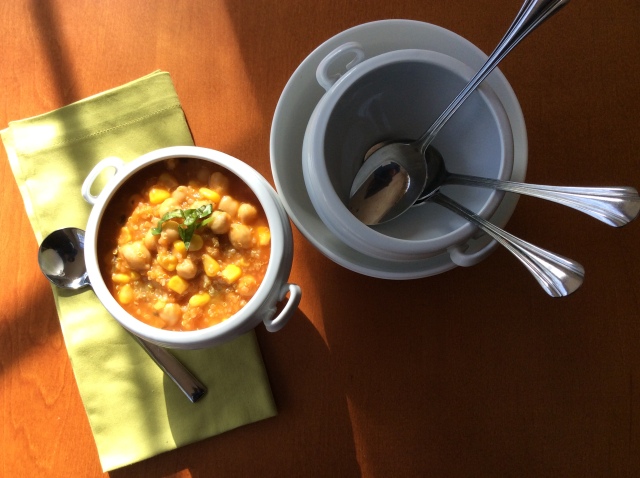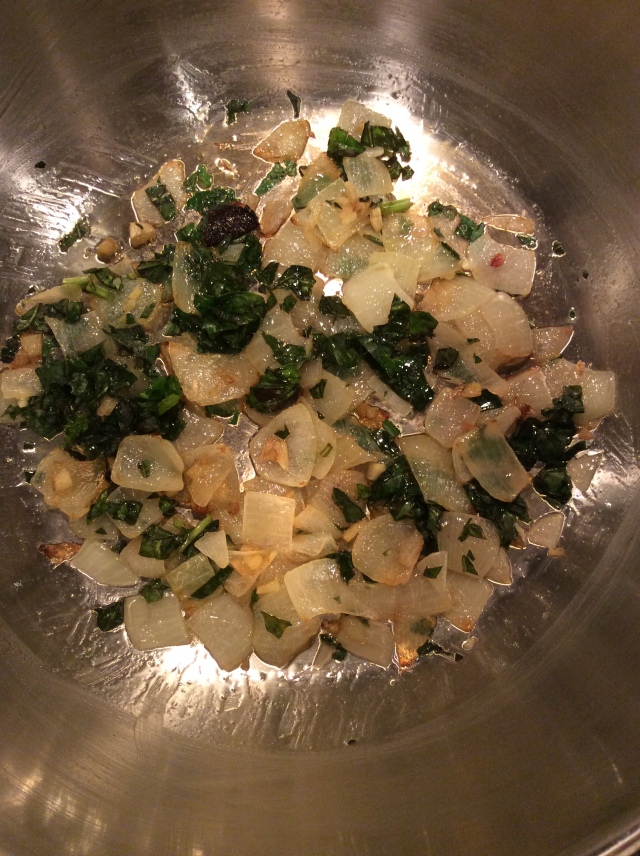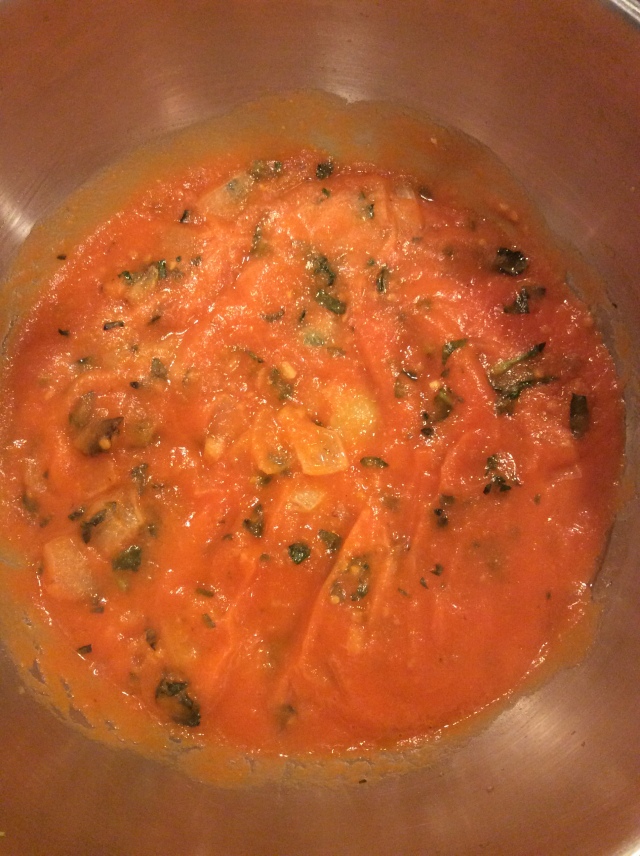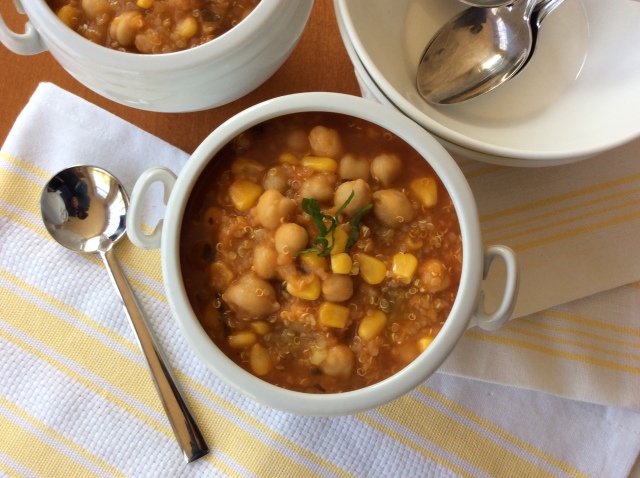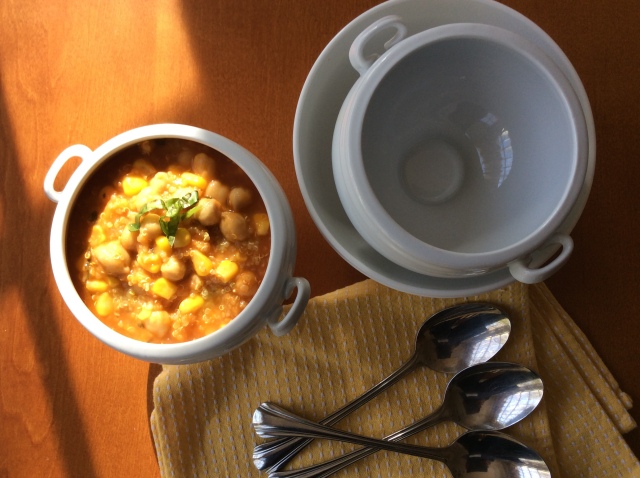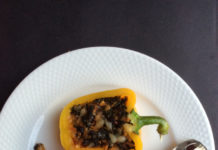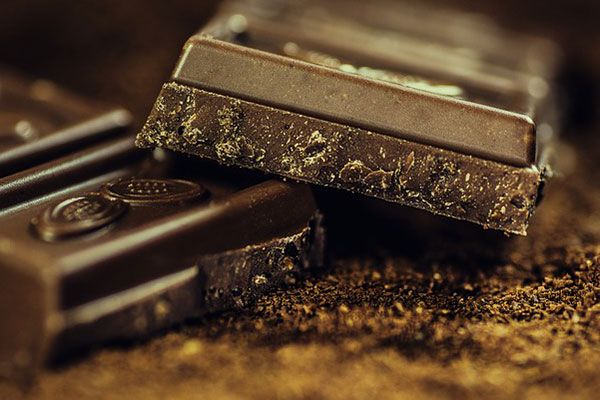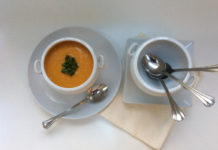
By Sangeeta Pradhan
INDIA New England Columnist
Quinoa-Chickpea stew with carrots, tomatoes, and a hint of basil | Web Dietitian
What’s old, becomes new again: Ever since an ancient psuedograin called quinoa got catapulted into the limelight by the media touting its considerable benefits, consuming quinoa has become today’s trend, with this amazingly, healthy seed (yes, even though it may be used as a whole grain, quinoa is actually a seed), popping up in grocery stores everywhere, and fitness magazines featuring at least one quinoa recipe within their glossy covers. But is quinoa’s reputation as a nutrient powerhouse well deserved? Scroll all the way down to my “Registered Dietitian’s tip”, to find out…
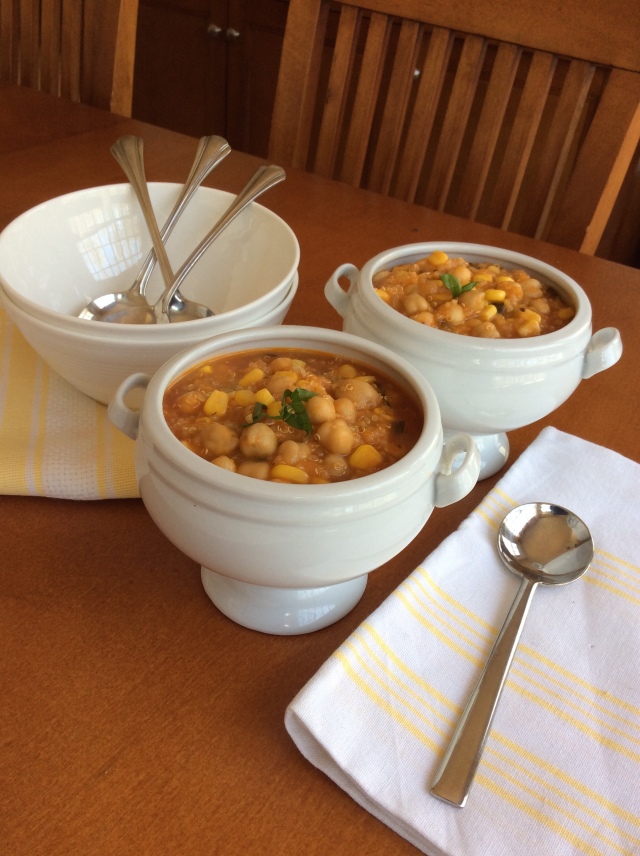
Quinoa, corn and chickpeas are simmered with pureed carrots and tomatoes to make a nutritionally balanced, hearty stew. © Copyright, 2016, Sangeeta Pradhan, RD, LDN, CDE.
Multi-nutrient medley: The featured recipe combines 3 nutrition super stars such as quinoa, carrots and chickpeas, with the tangy flavor of blanched tomatoes, the earthiness of ginger, and the crunch of sweet corn to make a wholesome, hearty stew that is a meal in itself. Fresh basil adds the perfect, finishing touch to this heart warming dish.
Cooking tip: Quinoa has a coating of a bitter substance called saponin, so be sure to rinse thoroughly in several changes of water before cooking.
Yield: Approximately 4-5, 1 cup servings, or 8-10, 1/2 cup servings.
Ingredients:
- 2 tbsp olive oil
- 1 large carrot, cut into large chunks
- 3 plum or medium tomatoes, blanched, skin removed and chopped
- 1 large onion, diced
- 1 tbsp. minced, fresh ginger root
- 1/3 cup fresh basil, chopped + 1-2 tsp for garnish
- 1, 15.5 oz can chickpeas, drained and thoroughly rinsed
- 1/3 cup dry quinoa, rinsed
- ½ cup frozen, sweet kernel corn
- 3 cups vegetable broth*
- 2 tbsp. red wine vinegar
- ¾ tsp salt or per taste
- Freshly ground pepper to taste
*May substitute chicken broth, if desired
Method:
- Steam carrots until soft and tender. Reserve liquid left behind from steaming.
- Heat the olive oil in a large, thick bottomed sauce pan.
- Sauté onion until soft in olive oil.
- Add ginger until it sizzles and turns a pale brown.
- Add the fresh basil and stir.
- Puree the steamed carrot chunks and chopped, blanched, tomatoes, in a high-speed blender with the reserved liquid from the steamed carrots.
- Stir in the pureed tomatoes and carrots from step 6, into the onion-ginger-basil mixture in the pan until well blended.
- Add drained and rinsed chickpeas, stirring for a few minutes.
- Add 3 cups of the broth, and bring the mixture to a rolling boil.
- Add 1/3 cup of the rinsed quinoa to the boiling mixture in the pan.
- Give the pot a good stir, and allow to boil another couple of minutes before closing the lid and allowing to simmer on medium-low heat for about 10 minutes.
- Stir in the red wine vinegar, salt, pepper and the corn.
- Allow to simmer for an additional 5-10 minutes until quinoa is fully cooked, (grains will swell up, and little white “threads” will pop up), and mixture begins to thicken to the consistency of a stew. See figure below.
- Serve hot, garnished with basil if desired.
A Registered Dietitian’s tip:
Quinoa: What’s all the buzz about??
Is quinoa really as nutritious as it is made out to be?? Surprisingly, unlike many popular trends that may be unsubstantiated, quinoa is truly a nutrient super star. For starters, unlike most plant-based proteins, quinoa is a complete protein, supplying your body with all the nine essential amino acids. Essential amino acids cannot be synthesized by your body, and hence must come from the foods you eat. Unlike whole grains, a 1/4 cup of quinoa can supply at least 6 grams of protein and about 20% of the daily value for iron, an essential component of hemoglobin, a protein in your blood that can help transport oxygen to your cells and tissues.
Good news all around: A native of South America, quinoa is botanically related to leafy greens such as swiss chard and spinach, and also supplies essential minerals such as potassium and magnesium which can help lower blood pressure. As if that’s not enough, quinoa is also a good source of fiber, which can among other things, help lower cholesterol, help you feel full after a meal, and stabilize your blood sugar levels.
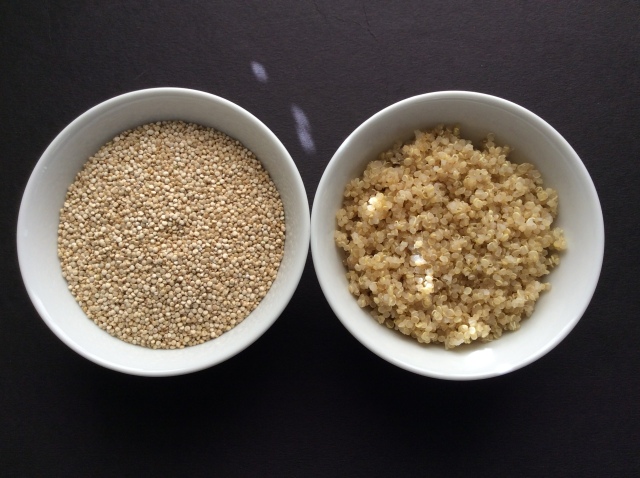
Raw quinoa on the left, and cooked quinoa on the right side of this picture. © Copyright 2016, Sangeeta Pradhan, RD, LDN, CDE.
Gluten free, naturally! Unlike some of the manufactured, and highly processed gluten-free products that line today’s super market shelves, quinoa is naturally gluten-free, potentially presenting a “go-to” option for folks with celiac disease or those with any form of gluten sensitivity.
Source of resistant starch, supplying prebiotics: Resistant starches, as the name suggests, resist the action of your digestive enzymes, and become substrates for the gut bacteria in your colon. As discussed in this post on probiotics, our friendly, colonic tenants subsequently ferment the resistant starches in quinoa, producing a variety of organic acids that not only serve as fuel for your colon cells, but the acidic environment they create helps keep out “bad bugs” and their harmful by-products, keeping your gut healthy. An altered gut microbiota called dysbiosis (an undesirable alteration of the microbiota resulting in an imbalance between protective and harmful bacteria), has been linked with many chronic diseases including obesity, diabetes, asthma, allergies as well as inflammatory bowel diseases such as Chrohn’s.
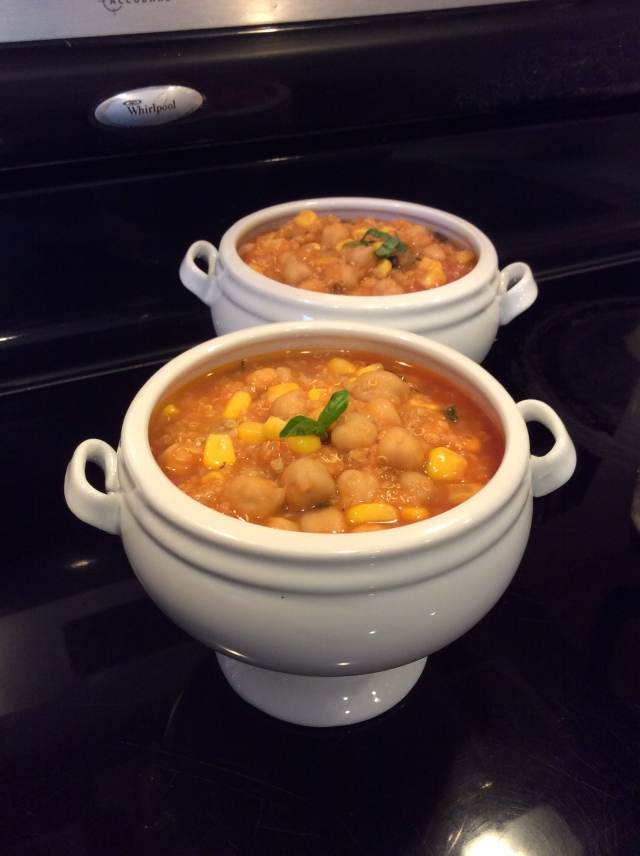
© Copyright, 2016, Sangeeta Pradhan, RD, LDN, CDE
Disclaimer: This blog is strictly for informational purposes, and should not be construed as medical advice. Please consult your personal physician or registered dietitian for recommendations tailored to your specific needs.



